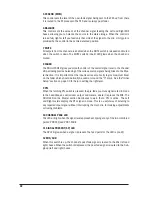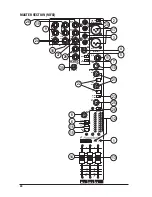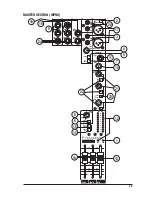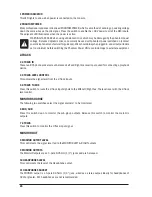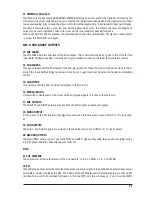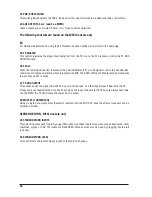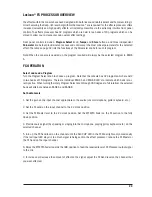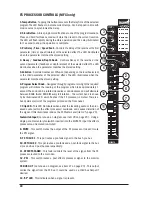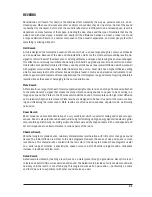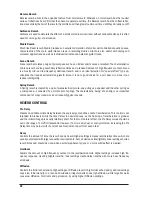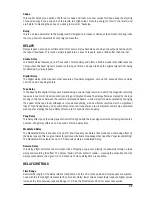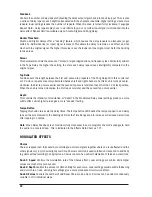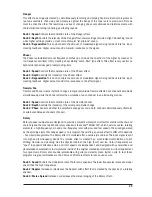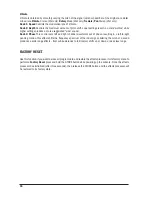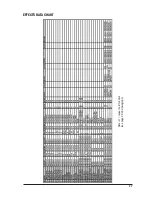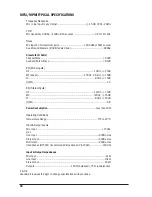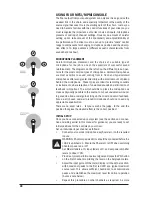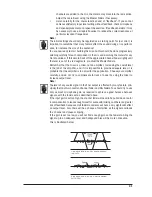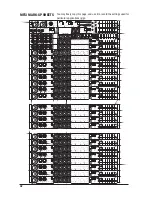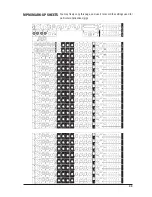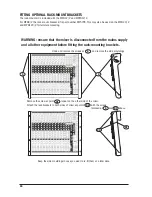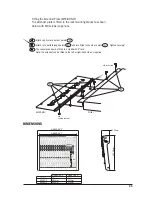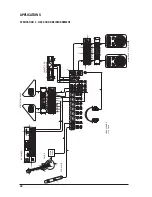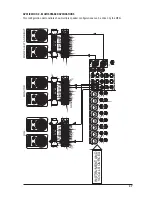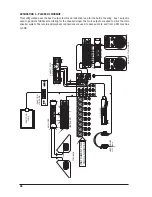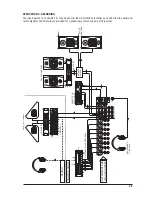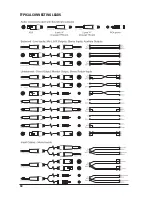
35
Flanger
This effect was originally created by simultaneously recording and playing back two identical programs on
two tape recorders, then using hand pressure against the flange of the tape reels to slow down first one
machine, then the other. The result was a series of changing phase cancellations and reinforcements, with
characteristic swishing, tunneling, and fading sounds.
Knob 1: Speed
Controls the modulation rate of the Flanger effect.
Knob 2: Depth
Controls the intensity of the Flanger effect. Lower settings provide a slight “whooshing” sound
while higher settings provide a much more dramatic “jet airplane” sound.
Knob 3: Regeneration
This knob controls the amount of modulated signal being fed back into the input,
creating feedback. Higher amounts add a metallic resonance to the signal.
Phaser
The Phaser automatically moves frequency notches up and down the spectrum of the signal by means of a
low frequency oscillator (LFO), creating an oscillating “comb-filter” type effect. This effect is very userful on
keyboards (especially pad presets) and guitars.
Knob 1: Speed
Controls the modulation rate of the Phaser effect.
Knob 2: Depth
Controls the intensity of the Phaser effect.
Knob 3: Regeneration
This knob controls the amount of modulated signal being fed back into the input,
creating feedback. Higher amounts add more resonance to the effect signal.
Tremelo/Pan
Tremolo and Panner create rhythmic changes in signal amplitude. Tremolo affects both channel’s amplitude
simultaneously, while the Panner affects the amplitude of each channel in an alternating manner.
Knob 1: Speed
Controls the modulation rate of the Tremolo/Panner.
Knob 2: Depth
Controls the intensity of the volume amplitude change.
Knob 3: Phase
Controls whether the amplitude change occurs in both channels simultaneously (Tremolo)
or alternates between channels (Panner).
Rotary
Rotary speaker cabinets were designed to provide a majestic vibrato/choir effect for electronic theater and
church organs. The most well known rotary speaker is the Leslie™ Model 122, which has two counter- rotating
elements: a high-frequency horn and a low-frequency rotor with slow and fast speeds. The sound generated
as the spinning elements change speed is truly magical. The swirling, spacious effect is difficult to describe
– but clearly recognizable. The Rotary effect is modeled after a Leslie-style cabinet. The input signal is split
into high and low-frequency bands. The rotation effect is created by a synchronized combination of pitch
shifting, tremolo, and panning. Like the physical cabinet, the high (horn) and low (rotor) frequencies are
“spun” in opposite directions. Horn and rotor speeds are independent, and designed with acceleration and
deceleration characteristics to simulate the inertia of the original mechanical elements. A virtual requirement
for organ music, Rotary also sounds remarkable with guitar and electric piano rhythm parts. In fact, these
programs are great alternatives to the Chorus and Tremolo effects for any sound source.
Knob 1: Speed
Controls the modulation rate of both rotary speakers. The lower frequencies rotate at a slower
speed than the high frequencies.
Knob 2: Doppler
Increases or decreases the Doppler pitch effect that is created by the physics of a rotating
speaker.
Knob 3: Stereo Spread
Increases or decreases the stereo imaging of the Rotary effect.
Summary of Contents for MFXi
Page 1: ...1 USER GUIDE...
Page 23: ...23...
Page 37: ...37 EFFECTS DATA CHART Note H repeat hold function see page 29 2nd paragraph...
Page 39: ...39...
Page 50: ...50 TYPICAL CONNECTING LEADS...


